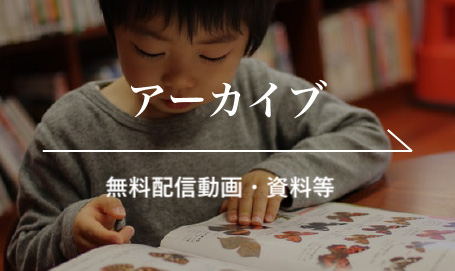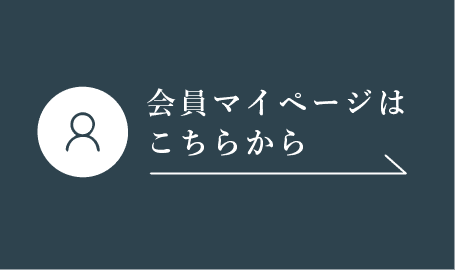< VOLUME 45, No.2 >
Murakami Yachyo, Negayama Koichi. Toddlers’ Refusal Behaviors and Caretakers’ Interventions in the Scene of Changing Diapers : A Comparative Analysis of Home and Nursery School.
Research on Early Childhood Care and Education in Japan, 2007, 45(2), 107-114.
Previous research has focused only on the aspects of toddlers’ excretion independence time and diaper performance. However, such research has paid little attention to communication between toddlers and caretakers while children’s diapers are being changed. This research analyzed the actual activity of changing diapers at nursery school and at home using videos to examine and identify different types of communication between child and caretaker. Caretakers at home checked diapers by directly touching toddlers more frequently than caretakers at nursery school. When changing diapers, toddlers resisted their caretakers at home more than at nursery school. The caretakers at home were also using more various ways to change diapers. Toddlers were using the time during diaper changing to attract their parents’ attention and to exert some control over them. It was concluded that toddlers easily distinguish between their parents and nursery school caretakers, and change their attitudes accordingly and to their advantage.
Keywords: refusal behavior, intervention, toilet training
—————–
Matsuike Yasuko, Sada Keiko, Emura Hiroko, Kaji Miho, Toyoda Kazuko. A Survey on Eating Attitude and Practical Improvement Based on “Eating Aid Program” : For Qualitative Improvement of Early Childhood Care.
Research on Early Childhood Care and Education in Japan, 2007, 45(2), 115-124.
This study surveyed the actual situation of eating education for one-year-old children, analyzed the development of eating aid programs and its practical improvement, and discussed problems of child-care workers’ aid to infants, improvement of their environment, and cooperation with parents. Child-care workers selected from 14 nursery schools established a research methodology based on feedback. The resulting information can be used to improve the quality of infant care and family support through the following processes: 1) self-evaluation, 2) participation in workshops (videotape recording and open nursery school), 3) introspection, 4) field survey, 5) practical improvement and 6) cooperation with families.
Keywords: eating aid, qualitative improvement in early childhood care, eating aid program, practical improvement, one-year-old children
—————–
Kousokabe Taku. Research on the Process of Young Children’s Conceptual Change Trough Relation with a Creature in Early Childhood Education and Care : From the Analysis of Young Children’s Change of Interaction with Silkworms.
Research on Early Childhood Care and Education in Japan, 2007, 45(2), 125-134.
This research analyzed young children’s cognitive development focusing on the change of children’s reaction to silkworms. The result clarified that young children’s interaction with silkworms had developed their intellectual curiosity through the process of changing and reorganizing their concepts regarding the silkworm. Their newly gained deductions and knowledge increased their awareness of cause and effect in nature and as well as activated their metacognition. Therefore, the result suggests the importance of supporting them with an eye on the following three points. First, to develop young children’s intellectual curiosity by interaction with creatures. Second, to make them aware of cause and effect of nature by inference. Third, naturally to give them new knowledge.
Keywords: conceptual development, ecological validity, silkworm, cause and effect, metacognition, intellectual curiosity
—————–
Kim Yeonkyeong. PAC Analysis Concerning the Functions of “Child-Rearing Network” Surrounding Mothers.
Research on Early Childhood Care and Education in Japan, 2007, 45(2), 135-145.
This study conducted PAC analysis for mothers with young children and examined the function of a “Child-Rearing Network”. The results of four cases verified three functions: a supportive, a normative and a comparative function. These functions didn’t coexist in each individual ; however one stood out as a dominant type. Mothers described their positive feelings toward helping each other in the support function, their negative feelings against following norms in the normative function, and their feelings of self-distance and conflicts in comparing themselves with others in the comparative function. The result suggests an important clue to how the members of a “Child-Rearing Network” can affect mothers and how mothers themselves should make use of the network.
Keywords: Child-Rearing Network, a supportive function, a normative function, a comparative function, PAC (Personal Attitude Construct) analysis
—————–
Kanda Naoko, Toda Yuichi, Kamiya Tetsuji, Suwa Kinu. Beliefs on Cross-Gender Collaborative Infant Rearing : Differences and Correlations Among Fathers, Mothers and Teachers of Infants at Day Care Centers.
Research on Early Childhood Care and Education in Japan, 2007, 45(2), 146-156.
The purpose of this paper is to investigate the beliefs on cross-gender collaborative infant rearing among fathers, mothers and teachers of infants at day-care centers. This study analyzed a part of data-set including answers of questionnaires from 6, 618 fathers, 8, 523 mothers, and 2, 356 teachers at day care centers in randomly selected cities in Japan. The results showed that(1)parents and teachers were inclined to agree with opinions for cross-gender collaborative infant-rearing in comparison to the pre-known average of ordinary adults. (2)Full-time teachers, parents working full-time and parents of children younger than three expressed more positive attitudes on the cross-gender collaboration. (3)The correlation coefficients between beliefs of fathers, mothers, and teachers at a day-care center were quite higher. Further investigations should be needed to reveal the reasons for the significant correlations of their beliefs.
Keywords: child-rearing support, gender division of labor, idea of child care, gender
—————–
Aramaki Misako, Ando Satoko, Iwafuji Hiromi, Niwa Sagano, Horikoshi Norika. Characteristics of Mothers Using Extra Hours for Child Care in Preschool : Focusing on the Burden of Child-Rearing.
Research on Early Childhood Care and Education in Japan, 2007, 45(2), 157-165.
The purpose of this study is to investigate the relationship between the opportunity of extra hours for child care in preschool and the burden of child-rearing, and the characteristics of the mothers who use them The questioner made it clear that mothers who already use the opportunity of extra hours or who hope to use this resource feel more strongly the burden of child-rearing than mothers who do not use it. When preschool children have older siblings, their mothers tend to use the extra hours. On the other hand, those who are living with grandparents do not tend to use them. Mothers who use the opportunity of extra hours are likely to use more places to leave their children besides preschools. It was discussed how these extra hours should take a necessary role as a part of child-rearing support network.
Keywords: burden of child-rearing, extra hours in preschool, child care support, full-time housewives
—————–
Kikuchi Satoe. Field-Works Regarding Practice of Childhood Care and Education as a Culture : Critical Discussion about Ethnographical Research on Childhood Care Practices and Education.
Research on Early Childhood Care and Education in Japan, 2007, 45(2), 166-174.
It is necessary to consider the characteristics of childhood care and education in order to do ethnographical research on the practice of childhood care and education. The author discusses the necessity to regard the practice of childhood care and education as a kind of culture. To clarify this point, the author critically examined a recent ethnography. The result indicates that the meaning of each scene selected for analysis in this particular ethnography was not well-defined in terms of the practice of childhood care and education. This problem was caused by taking characteristics of the practice of childhood care and education for granted as universally common.
Keywords: research on the practice of childhood care and education, ethnography, field-works, culture
—————–
Hayashi Hiroko. An Alternative Meaning of Cooperation between Kindergartens and Elementary Schools : Some Observation in Children’s Practical Cooperative Activities.
Research on Early Childhood Care and Education in Japan, 2007, 45(2), 175-182.
The purpose of this study is to search for a definitive meaning of cooperation between kindergartens and elementary schools. The author observed a 5 th grade boy in elementary school who exhibited repeated deviant behavior in his class. It was found that he was caring for younger children in cooperative activities between his elementary school and a kindergarten. His caring for trouble-making children in the kindergarten changed his relationship with his friends and with himself. His change also transformed his whole class including his teacher and classmates. This transformation was derived from the unconscious-voluntary learning-oriented activities, not driven by feelings of ‘ought’ but those of being ‘provoked’.
Keywords: practical cooperative activity, caring, relational analysis
—————–
Fujihara Yumiko. The Role of an Institution for Day Care for Sick Children : Focusing on Evaluation of the Staff.
Research on Early Childhood Care and Education in Japan, 2007, 45(2), 183-190.
Previous studies of day care for sick children mainly discussed issues of saving the staff’s working time. Alternatively, this study examines the necessary role of an institution for child care support. The author interviewed staff caring for sick children to examine how they supported parents and took care of their children upon the time of leaving and receiving their children. Results indicated that the most important purpose that day care for sick children can fulfill is to provide a home-like environment for the child as well as consistent and appropriate child care in order to solve the problem of parents’ distress in child care. The result also suggests that institutions for childcare support should provide individual and specific support to children and parents when parents have difficulty coping with childcare.
Keywords: institution for child care support, day care for sick children, saving of working time
—————–
Matsui Gota. Development of a Support System for Children with Disabilities to Attend Elementary School : A Trial Use of Support Files for Children in Transition from Kindergarten to School.
Research on Early Childhood Care and Education in Japan, 2007, 45(2), 191-198.
This study analyzes a support system that connects day care for children with disabilities to special support education at elementary school. This system consists of three parts: assessments, child care conferences, and support files. Teachers can better understand the particular characteristic of a child with disabilities from a developmental check list and assessment. In a child care conference, teachers may present child care goals and strategies and determine how to implement them in practice. A record of child care practice is summarized in one support file for use as a document to enter elementary school. This system is more convenient for use at a nursery, kindergarten and elementary school than the current system for special education now being arranged in each municipality.
Keywords: children with disabilities, a support system to enter elementary school, a support file, special support education
—————–
Sawai Yoko, Komai Michiko. Nursery School Teachers’ Use of Video for Self-Evaluation : Analysis and Results.
Research on Early Childhood Care and Education in Japan, 2007, 45(2), 199-209.
Recently, Japanese policies concerning nursery schools and upbringing have changed dramatically. In 2004, the next generation of child-rearing support policies was implemented. Furthermore, in 2006, aiming to support healthy development of infants, a bill of “Centre for Early Childhood Education and Care” was approved and new kindergartens based on this bill have already been started. A movement toward commercialization is spreading among both private kindergartens and public kindergartens. In such situations, it is required for nursery school teachers to reflect upon the content and quality of their care from the point of view of parents and to improve them accordingly. This study experimented with the methodology of video-recording of nursery school teachers’ practice for use in their self-evaluations. The result suggests that teachers can analyze their own practice as recorded in the video to improve their teaching methodology and the quality of their care.
Keywords: self-evaluation, video, improvement of teaching methodology
—————–
Togo Etsuko. The Effect of a Developmental Education Program to Enhance Nurturance (Yougosei) for Children : Junior High School Students’ School Life and Community Relations.
Research on Early Childhood Care and Education in Japan, 2007, 45(2), 210-220.
The purpose of this study is to examine the process of experiencing a developmental education program to grow nurturance for children in junior high school students’ school life and community relation and to clarify the effect of this program. The program was implemented among 75 junior high school students. A questionnaire was developed and used afterwards to evaluate their reactions. The content of the questionnaire included questions about community relations, school relations, relationships with nursery staff and nursery children. The result indicates that the program improved junior high school students’ relations with friends, adults and community. In the process of experiencing this program, “mentoring by nursery staff” affected their relationships with adults and friends while “child positive stimulation” affected their relations with friends and community. These findings are useful for improving the program in the future.
Keywords: parenting program, junior high school student, school life, relation with community
—————–
Fukuhara Masae. Understanding and Promoting Children’s Attendance at Osaka Aishu Kindergarten in the Meiji Era, and the Significance of Such Efforts.
Research on Early Childhood Care and Education in Japan, 2007, 45(2), 96-106.
The council of 21 affiliated towns in East Osaka established Aishu Kindergarten in 1879 with the aim of making the effect of good child care known to the public at large. In an innovative move, the kindergarten recorded the attendance of children, provided medical examinations, and at the end of each month gave rewards to children with regular attendance to promote good attendance. The kindergarten made and reported attendance records even before being instructed by the East Osaka Ward Office to do so. In 1886, the town council voted for a “fair collection” method of nursery school fees based on attendance. This was authorized by the East Osaka Ward Office. In 1889, Osaka City administration was established and required the submission of attendance records going back to the previous year, which Aishu Kindergarten was able to provide without delay.
Keywords: The East Osaka Ward Office, attendance, nursery school fees
—————–









